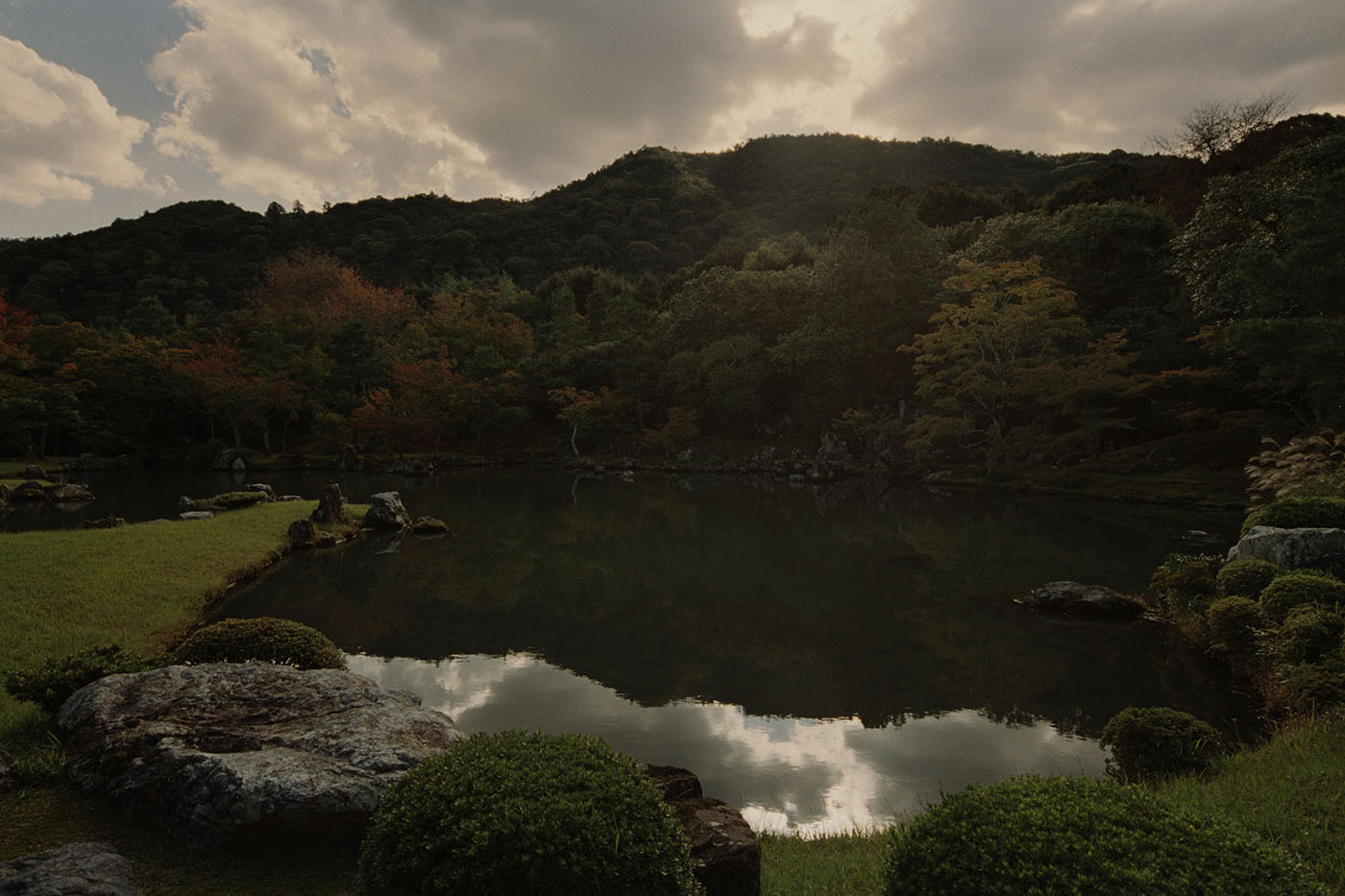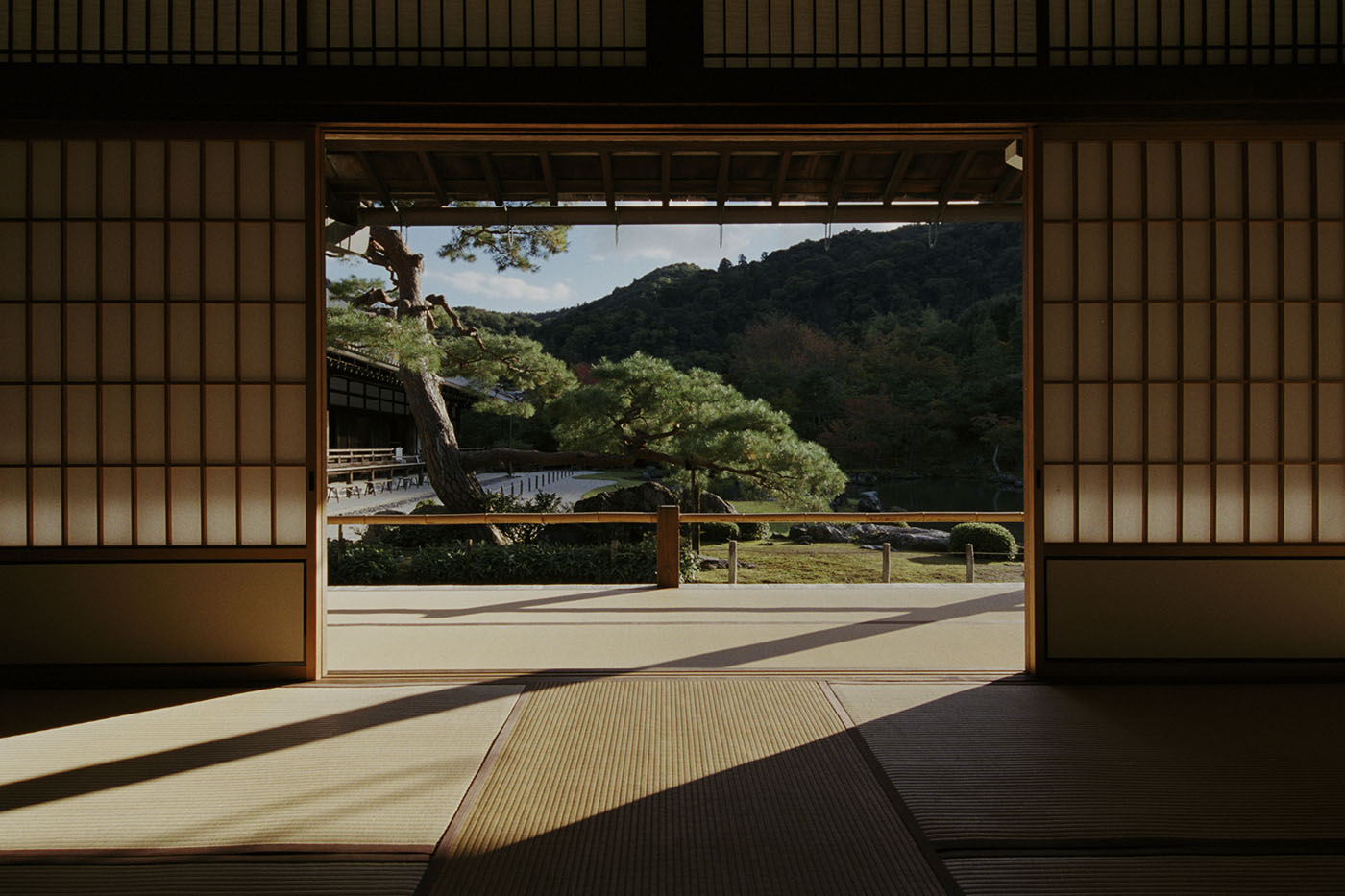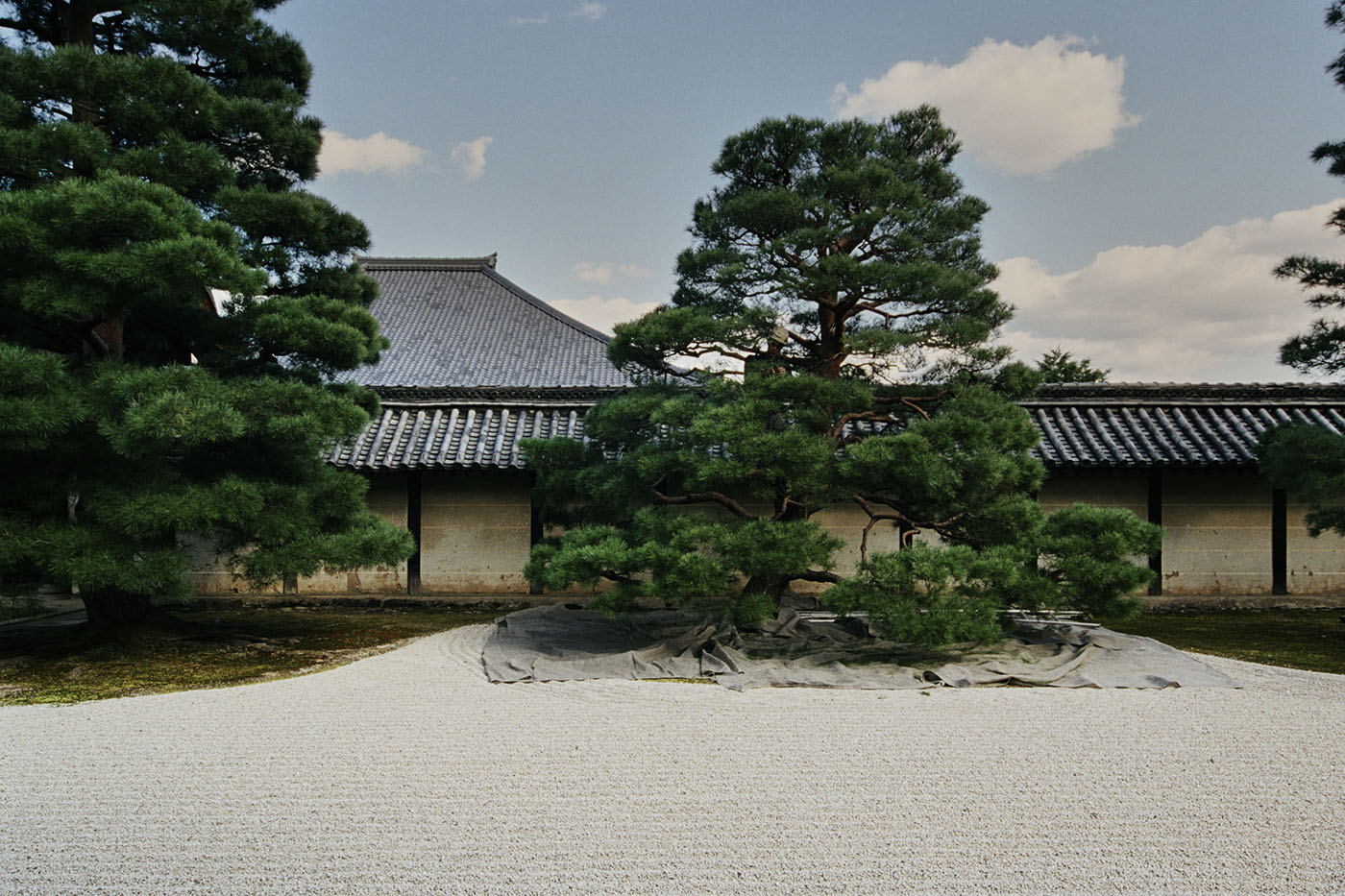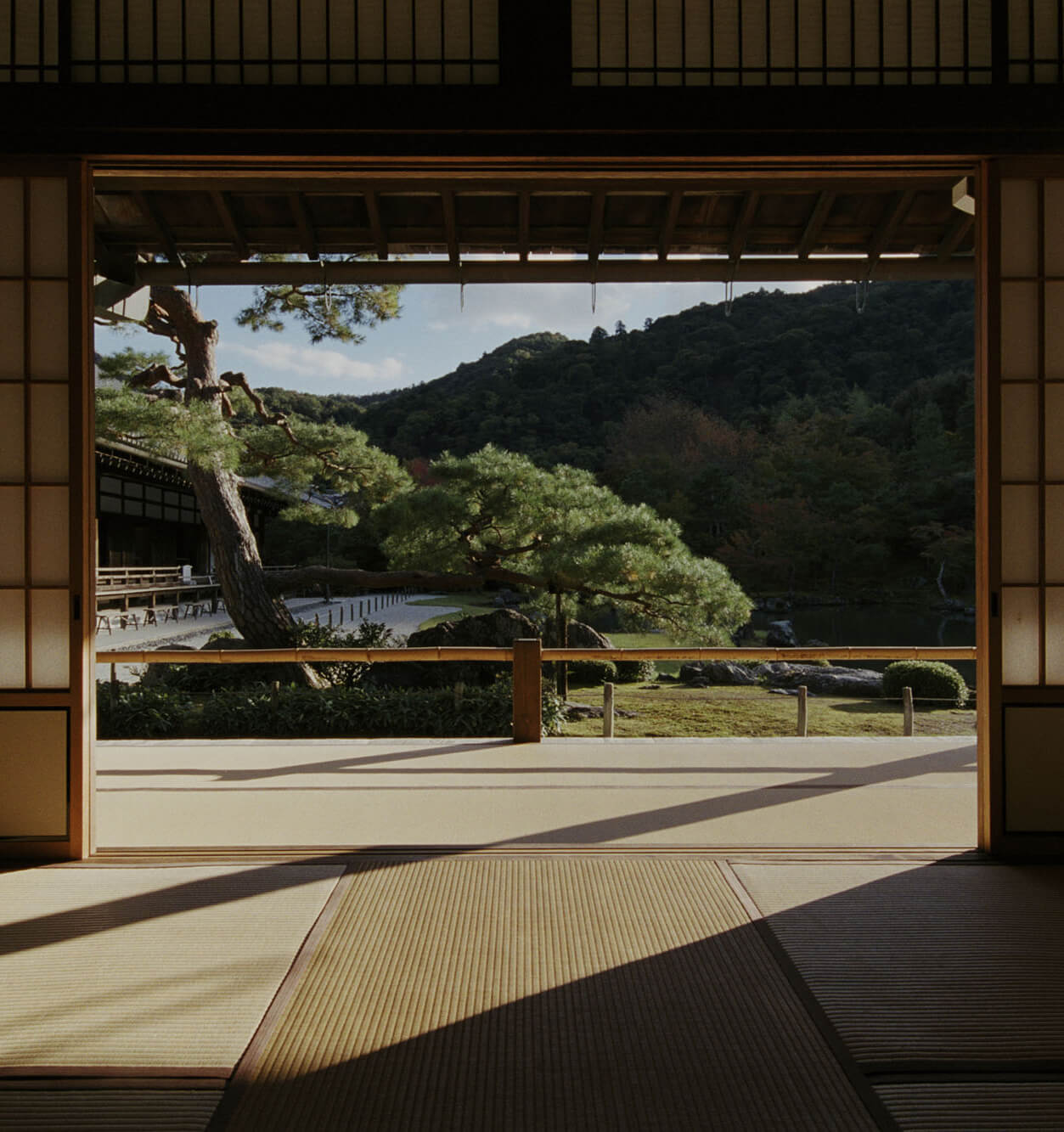DUO’S JOURNEY
kyoto Tenryu-ji Temple
A temple of the Rinzai sect of Zen Buddhism, Tenryu-ji was founded by Ashikaga Takauji, founder of the Muromachi shogunate. The pond garden Sogenchi Teien was laid out by Muso Soseki. With Arashiyama as its shakkei, Sogenchi Teien is designated both a National Special Place of Scenic Beauty and a World Heritage Site.
Yamaguchi:
As a World Heritage Site, Tenryu-ji is a very popular tourist destination. Sogenchi Teien, with Arashiyama as its shakkei, is said to have been created by Muso Soseki. But to be honest, when I was there, I didn’t quite know what to capture. There’s Arashiyama beyond this big lake, but because the mountain and garden are topographically continuous, it’s hard to tell whether it’s shakkei or background.
The tree height in the foreground is adjusted so you can see Arashiyama just so, of course, but it’s so natural, indistinguishable. It’s merely a mountain and a garden sitting next to each other. I got the sense it stood the test of being shakkei because it was the iconic Arashiyama.

Kumon:
Even as famous as Tenryu-ji is, I was still thrown for the sheer number of tourists there and how difficult that made the photoshoot. There are benches at every viewpoint and people sitting on them at any given moment, and the weather made for such strong backlighting that there wasn’t light illuminating the backdrop. So, we scouted for something different to capture.
I waited for sundown and those moments where nobody was in the shot I wanted, and I took them. I’m referring specifically to what I captured from a room in the Kohojo (Small Hojo) next to the Daihojo (Large Hojo). There’s a shakkei beyond the shoji screens, and I thought it was stunning how the light put Arashiyama in shadow, highlighted the pine trees, and created depth like a Kabuki stage set. If both had been lit the same way, the photo wouldn’t have turned out like this.

Yamaguchi:
It was such a moving experience for me, to go from looking out at the scene from the pond’s edge without much thought, to seeing it for the first time as Mr. Kumon saw it, framed as stunning shakkei. Framed by the room’s shoji screens, the composition zigzags from the pillar’s shadow rising diagonally to the right, to the low handrail, to the pine tree sloping down to the right, the pond, and the mountains sloping down to the left, beautifully capturing shakkei in the distance. It’s one of the photos that made me go, “Wow, Mr. Kumon is amazing!”
It could be the garden was designed to be framed by shoji screens, not to be viewed in its entirety. The space is otherwise too expansive as a landscape. That’s something I realized looking at Mr. Kumon’s photo. You intentionally close up the shoji screens and hide the outdoors during indoor events or functions, and at their conclusion, you sweep the doors open and break out the beautifully framed scenery.
Kumon: It’s interesting to take stock of the things that catch your eye when you cut and frame a scene from a broader milieu. I think there’s something similar about photography and shakkei in that the perspective becomes fixed. The height of the angle is roughly from the perspective of someone seated on their heels on the floor, which means the view may have been crafted with the height of daily life in mind. In Japanese culture, much of daily life is spent close to the floor, so the low handrails may even be designed to accommodate the height at which people spend much of their lives. I wasn’t able to take photos from Daihojo, but the view from there might have been still different.
Yamaguchi:
There was a group of older ladies in the same area while we were looking for shots in Kohojo, so it was difficult for Mr. Kumon to capture what he wanted. But then, Mr. Kumon went over and gently showed them how to frame the shot. And the ladies were so delighted, and they quickly moved out of the space. According to Mr. Kumon, that’s one of the tricks to getting people out of your frame. I was truly impressed.
Sogenchi Teien is Tenryu-ji’s main attraction, but at the back of the garden, there’s a stream that winds through a narrow corridor leading to Tahoden, the Hall of Many Treasures. The stream itself is very pretty, but the interesting thing is that none of the tourists paid it any attention. The scenery centering Sogenchi pond can be said to be fairly straightforward, but by comparison, this stream, outside that scenery, was a highly concentrated microcosm of a world. I’ve thought this of other gardens as well: you can find these small but worthwhile views that balance out the main garden, often to the back of it. When you find these views, you feel that deep sense of fulfillment.

Kumon: You know how even when the garden is open to visitors, there are gardeners taking care of the grounds. And I thought even that was picturesque. I’ve come to increasingly appreciate the pine trees as well as gardeners. It was early autumn, so they had a sheet laid out and were removing dead leaves from the trees.
Yamaguchi:
I think the sheet as a modern-day, functional material together with the pine trees make for an interesting photograph. I still have a hard time accepting them as “neighboring textures,” though. It’s because I want people to understand the beauty of gardens through this project, and I use beauty as a criterion.
On the other hand, as a photograph, I think the sheet is actually what makes this one so intriguing. It turns an ordinary scene into something more. I guess that’s the power of photography.
October 27, 2021
